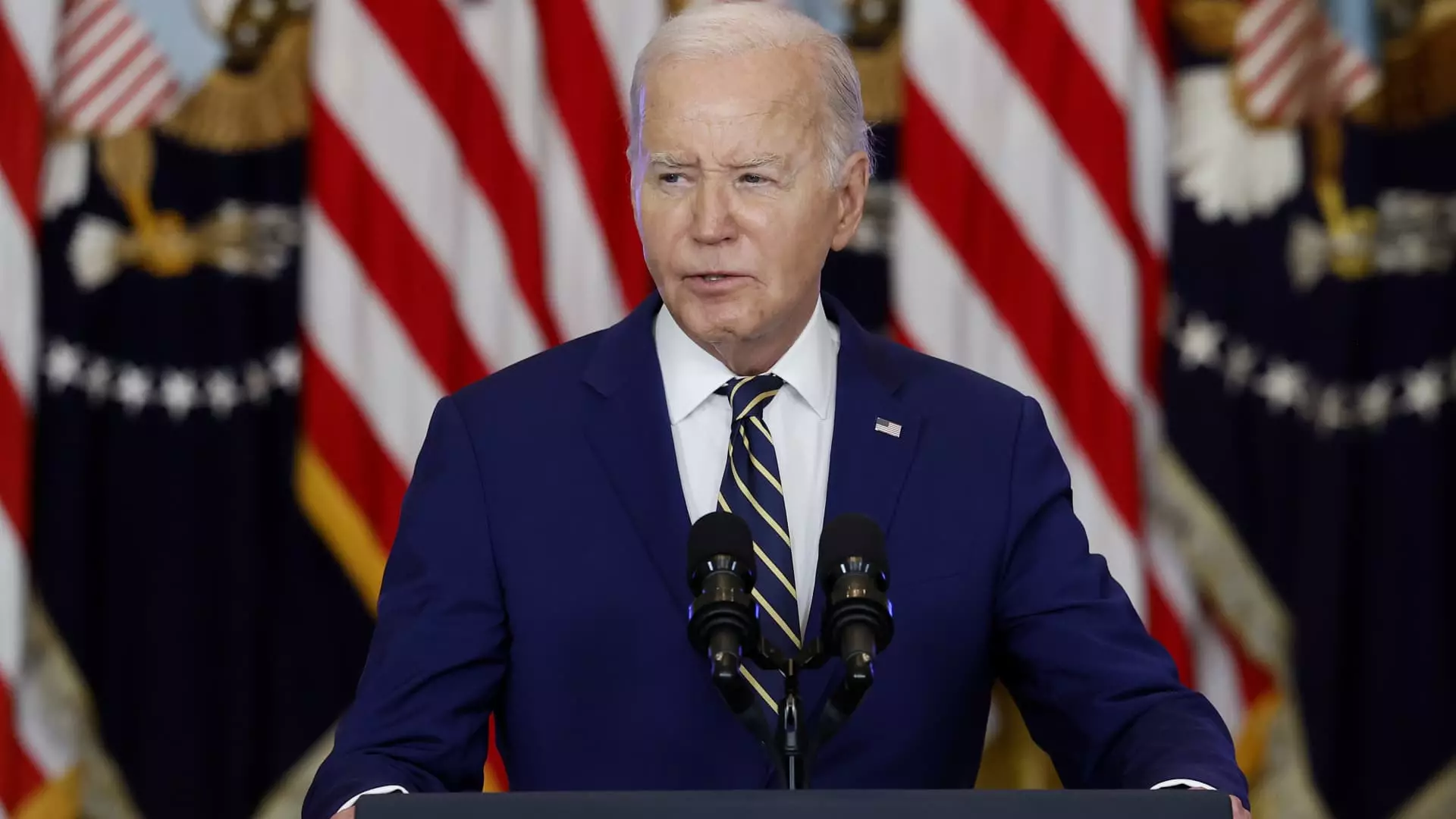The Biden administration’s recent announcement regarding asylum restrictions at the southern border reflects a complex interplay of political pressures, public sentiment, and immigration realities. With the goal of assuaging voter concerns over immigration-related issues, the administration has proposed stricter measures that significantly alter the criteria for asylum eligibility. As the landscape of immigration in the United States continues to evolve, these new regulations pose critical questions about their implications for migrants, the administration’s motivations, and the larger immigration debate in the country.
The revised asylum regulations, set to take effect shortly after their announcement, are part of a broader effort by the Biden administration to demonstrate a commitment to border security. Under the newly imposed rules, asylum claims can be denied if U.S. officials determine that the southern border is experiencing an overwhelming influx of migrants. This marks a tightening of previous standards, where asylum seekers could still apply if the encounters were temporary and averaged below 1,500 per day for at least a week. Now, however, officials have clarified that these numbers must remain consistent for nearly a month before the restrictions could potentially be lifted.
This alteration specifically includes migrant children in the counts for the first time, extending the restrictions well beyond previous policies that only accounted for minors from Mexico. Such changes make it more difficult for individuals hoping to seek refuge in the U.S. This raises critical human rights concerns, particularly for those fleeing persecution and violence in their home countries.
It is essential to examine the underlying context of these new rules: the ongoing challenges at the U.S.-Mexico border. Despite the tightening of restrictions, data show that the seven-day average of encounters at the border has not dipped below the administration’s thresholds long enough to lift any of the previously imposed limitations. With the seven-day average hovering around 1,800 encounters, it raises questions about the administration’s strategic timing in implementing tougher restrictions. If the initial criteria were never met to alleviate the asylum freeze, the introduction of more stringent rules poses the question of whether the administration is responding to genuine circumstances or merely attempting to score points with voters ahead of upcoming elections.
With immigration becoming a focal point of political contention, it is clear that the Biden administration is navigating a precarious path. Immigration concerns have been historically leveraged by opposition parties to criticize the incumbents. The narrative being spun by the Republican party, led by Donald Trump and others, emphasizes the perceived inadequacies of the Biden administration in managing border security. This narrative has catalyzed the administration’s response, underscoring how political realities can significantly influence policy decisions. Vice President Kamala Harris’ recent visit to Arizona, where she called for a re-evaluation of asylum processes, exemplifies the administration’s attempt to shift public perception and address immigration more assertively.
Furthermore, the push from the Department of Homeland Security (DHS) for legislative action to tackle immigration issues indicates a recognition that administrative restrictions are mere band-aids on a much larger, more complex problem. High migrant numbers at the border are not a new phenomenon; they are indicative of underlying socio-political conditions fostering mass migration. Advocating for more comprehensive immigration reform requires broad support from Congress, a task that has proven to be tremendously challenging.
Prominent immigration advocates have vehemently criticized the Biden administration’s latest asylum restrictions. The assertion that these policies protect vital asylum rights for those fleeing persecution has been met with skepticism, as critics contend that the measures disproportionately affect vulnerable populations. While the administration allows exceptions for certain cases—like victims of severe trafficking—these are few and far between. The overwhelming reality is that many individuals may now find themselves unable to access essential protections.
In this light, while the administration touts a substantial decline in migrant encounters—reporting a decrease of over 50% since the previously announced changes—there are deeper ethical dilemmas at play. The immigration system requires a balance between maintaining security and honoring humanitarian principles. The apparent reduction in migration numbers could reflect the implementation of more severe limitations rather than a genuine resolution of the underlying issues that drive individuals to seek asylum.
As the Biden administration continues to grapple with immigration complexities, the recent asylum restrictions underscore a significant shift in policy that prioritizes border security, potentially at the cost of humanitarian principles. This balancing act is fraught with contention and raises pressing ethical questions about the treatment of individuals seeking refuge from violence and oppression. The effectiveness of these rules remains to be seen, as does their impact on the nation’s broader immigration landscape and the lives of countless individuals and families. Moving forward, it is imperative that the discourse surrounding immigration remains grounded in both pragmatism and compassion, recognizing the inherent dignity of those seeking safety and a better life.


Leave a Reply